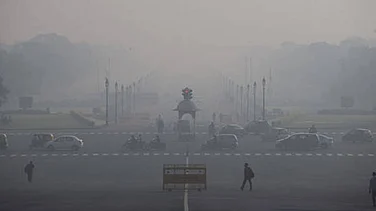After an emphatic win in Karnataka Assembly Elections last year, the Congress party is currently only leading in 9 out of 28 seats in the state, with the BJP-JD(S) alliance making gains in 19 seats.
The saffron party continues to maintain its stronghold over coastal Karnataka districts—Udupi, Dakshina Kannada and Uttara Kannada—which have witnessed increased instances of polarisation in the last few years. The party is also leading in three constituencies of Bangalore—South, North and Rural, along with other South Karnataka regions of Mysuru and Mandya.
In the months leading up to elections, Karnataka witnessed one of its worst prolonged drought periods. The Cauvery River water dispute was once again reignited, with farmers from Mandya and Mysuru regions struggling to get water to grow their crops. Bengaluru’s water crisis also made international headlines. Several of them expressed discontentment with the current Congress state government for its decision to allot a share of Cauvery to neighbouring Tamil Nadu, when their own state was facing a shortage of water.
The state also has a long history of caste politics, which influences electoral outcomes. For example, Mandya, which is part of the Vokkaliga belt, has, so far, never chosen anyone other than a Vokkaliga to be its MP or MLA. JD(S) candidate HD Kumaraswamy, who is a Vokkaliga, has won from the constituency again this time.
Many analysts had called this election a battle of survival for the JD(S) which contested in three seats in alliance with the BJP—Hassan, Kolar and Mandya. The JD(S) has won in two of these seats with rape-accused NDA candidate Prajwal Revanna losing by over 28,000 votes. Hassan was the only seat that JD(S) won in the last General Election.
Meanwhile, the other powerful caste group in Karnataka, the Lingayats, form a crucial support base for the BJP since the Ram Janmabhoomi movement in the 1980s and 1990s. They are predominantly splintered across North Karnataka regions of Dharwad, Belagavi, Bagalkot, Bidar, and Gulbarga and also in some Central Karnataka districts. The saffron party is leading in Dharwad, Belagavi and Bagalkot while Congress is making gains in Gulbarga and Bidar.
Although there was a strong wave in favour of the Congress and its guarantees, especially among women voters, on the ground, the state has never voted in the same pattern in the Assembly Elections and General Elections. This trend however seems to be changing in this election. Despite NDA’s lead, the grand old party will be making significant gains in Karnataka if the trends prove to be right. The Congress won only one seat in 2019—Bengaluru Rural. This time, it is leading in nine seats, most of them in the Kalyana Karnataka region—Hyderabad-Karnataka region. Meanwhile, the saffron party, which had won 25 seats last year, is leading in 17 seats.


















